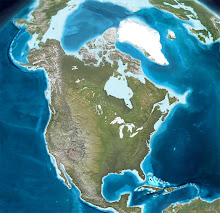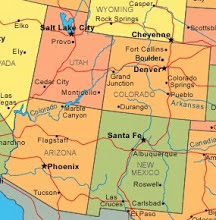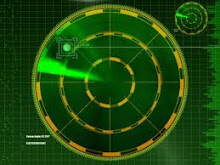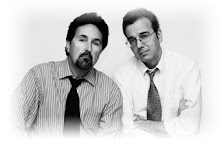By Steve Hammons
Recent, current and upcoming movies on stories related to UFOs, off-Earth civilizations and how humans fit into the situation continue to emerge from Hollywood.
A few examples include Aliens in the Attic, a kid-and-family-friendly movie released in July. Planet 51, scheduled to open in November, is an animated film and another one for kids and families.
The dark and introspective District 9 hit theatres in August and seemed to strike a chord with audiences and critics. The Fourth Kind, dealing with abductions of humans, takes the genre to a different level and audiences can check it out beginning this November.
James Cameron’s Avatar, due out in December, is already creating a buzz and promises to be visually exciting and thought-provoking.
And Curmudgeon Films recently obtained the rights to the story of an alleged Area 51 scientist for a movie project tentatively titled S-4: The Incredible True Story of Bob Lazar.
MEDIA AND ACCLIMATION
Are these films and many other creative works helping people prepare psychologically and emotionally for possible significant developments regarding UFOs and encounters with non-human and/or human-related beings from elsewhere?
To explore this question, we do not necessarily need to believe that UFOs and non-human or human-related civilizations are involved here on Earth. However, most people would say this is possible. Some people say it is probable. And others claim that it is a reality – a reality we need to deal with.
For people who are interested, the study of such situations is challenging. There seems to be much speculation and misinformation.
There also appear to be very interesting and well-researched documents, witness testimony and strong circumstantial indications that something along these lines has been going on.
In the mid-1950s, Walt Disney was reportedly approached by the U.S. Air Force and development of a documentary film about visitation of aliens to Earth was allegedly started. However, the plug was pulled on this project.
In subsequent decades, many “fictional” movies and TV shows did emerge that dealt with this topic in various ways. This trend continues now.
People can speculate about if this is an organized acclimation effort to prepare Americans and people around the world for an unconventional situation, or if it is just the creativity, imagination and money-making sense of the movie and TV businesses.
Either way, it is probably true that kids, teens and adults are today more prepared for the possibility or reality of the existence of non-human or human-related extraterrestrials, beings from other dimensions or similar kinds of unconventional scenarios because of movies, TV shows and books on these subjects.
SPECIAL SCENARIOS
Much has been written and discussed about the so-called “Majestic” or “MJ-12” group of experts reportedly formed after the Roswell incident.
Fewer people probably have heard of the alleged U.S. Army Counterintelligence Corps “Interplanetary Phenomenon Unit (IPU),” which, it is claimed, may have been active even before the Roswell case, due to previous intelligence about unconventional situations.
Reports of activities like these could indicate that, as part of dealing with a complex scenario, U.S. leaders realized that the American people would need to be informed and prepared in some way that did not cause undue social or other problems.
Indirect methods such as movies, TV programs, books and other creative endeavors would naturally be resources that could accomplish this. The close bonds formed between Hollywood and the defense community during World War II could have been leveraged to deal with this new challenge.
It will be interesting to see where this goes.
Some of the recent and upcoming movies, like those before them, take a good, hard look not only at “aliens,” but also at ourselves – the human race. This seems to be a necessary part of acclimation about how we might interact with or respond to encounters with others.
The scenario of human contact with more advanced civilizations is often compared to the experience of Native American Indians who encountered the technologically more advanced Europeans beginning in the 1500s until the “conquest” of what is now the western U.S. in the late 1800s.
The Native American Indian tribes, cultures and civilizations suffered quite a bit from this interaction. This is an understatement.
Would this happen to our own human cultures in the face of a technologically-superior race from elsewhere? This is a question that has been carefully considered by many researchers.
BE PREPARED
Preparing ourselves for the possibility or reality of contact like this seems to be wise. Being prepared for possible situations of many kinds is usually a good idea. This can enhance safety and the chances for good outcomes.
Movies, TV, books and other kinds of creative activities have an important part to play in these efforts. They help us explore and consider various possibilities. They prepare us psychologically, emotionally and spiritually, as well as forming common perceptions among us that might be helpful.
Of course, there are other unusual and thought-provoking subjects that may be both related to, and somewhat independent of, the topics of UFOs and visitors.
These include leading-edge thoughts and scientific research into teleportation, time travel, anti-gravity methodologies, advanced human perception, life after death and similar kinds of subjects. Plenty of movies and creative works have tackled these topics too, often with great results.
I like to think that my own two novels, Mission Into Light and the sequel Light’s Hand, as well as the subsequent movie screenplay and two TV pilot scripts based on them, help move the ball forward in these areas.
The books tell the story of the “Joint Reconnaissance Study Group,” a San Diego-based U.S. joint-military service and intelligence team of ten women and men who are tasked with conducting special research and operations. The novels bring readers and viewers into the inner workings of this special activities group as they explore different kinds of mysterious phenomena and the connections between them.
My adaptation of the books to a movie screenplay and a one-hour TV pilot, both closely based on the novels, might also spark interest along the way.
A two-hour TV pilot written by two other screenwriters, based more loosely on my novels, is also a good example of using the TV media to entertain and inform. With the help and guidance from a highly-qualified science advisor, we made sure that our concepts were sound.
Maybe one day these projects will make it to the big or small screen. It would be rewarding to think that these works could contribute not only to the body of worthwhile film and TV projects, but also help somewhat in the larger situations we might face.
skip to main |
skip to sidebar

In the past 30 days, readers from approximately 40 countries or territories using about 20 languages visited the Joint Recon Study Group site.

To see more articles, scroll down the right-side column.

Steve Hammons

Articles from the Joint Recon Study Group site and Transcendent TV & Media site are included.
The Joint Reconnaissance Study Group is the San Diego-based, combined-service/agency, research-and-activities team in my novels "Mission Into Light" and sequel "Light's Hand." This site contains information of interest to the JRSG.
Home page: Joint Recon Study Group site
Readers from around the world visit this site.

In the past 30 days, readers from approximately 40 countries or territories using about 20 languages visited the Joint Recon Study Group site.
April 2021 threat alert: ‘Force protection’ for our troops now the responsibility of all Americans
First responders must deal with society’s problems, shortcomings, injustices every day
Could some UFOs be linked to Native American 'white stone canoe' legends, stories?
Wildland firefighter basic training available at community colleges, tech schools, training centers
‘Boomer remover’ coronavirus is bigger threat to WWII generation that saved the world
‘Black swan’ events that aren’t: Coronavirus, climate emergency, unidentified aerial phenonema
Reagan’s complete 1987 UN message on ‘alien threat’ overlooked: Grave danger here, now
Was Reagan briefed about UFOs and original ‘Day the Earth Stood Still’ movie?
My military draft lottery number was #165 during final Vietnam War years
“Keep On The Sunny Side,” by The Whites, from movie O Brother, Where Art Thou?”
Living along Ohio River for centuries, Native Shawnee called it ‘Kiskepila Sepe’ – ‘Eagle River’
Native American words around us: States, towns, rivers, lakes, terrain, plants, animals, military
Athens County, Ohio, was key spot when colonists, Redcoats fought Shawnee in 1774 battle
1787 Northwest Ordinance set course for Ohio, Indiana, Illinois, Michigan, Wisconsin, Minnesota
Smallpox-tainted blankets were 1763 bioweapon on northern Appalachian Mountains frontier
Diana Krall performs “Maybe You’ll Be There" live in Paris with Paris Symphony Orchestra 2001.
Books to read in 2021? Novels "Mission Into Light" and the sequel "Light's Hand"
Novel excerpt: Renew, prepare America with ‘Urgent Response Group’ for teens, young adults
Diana Krall performs “I Get Along” live in Paris with Paris Symphony Orchestra 2001.
Steve Tyrell sings “Give Me the Simple Life.”
Diana Krall performs “Love Letters” live in Paris with Paris Symphony Orchestra 2001.
Visit the article archives!

To see more articles, scroll down the right-side column.
Novel "Mission Into Light" overview on Amazon
Novel "Light's Hand" overview on Amazon
Adventures of the Joint Recon Study Group: Overview and synopses of activities and operations
Key chapter overviews: Points of interest in the novel "Mission Into Light"
Key chapter overviews: Points of interest in the novel "Light's Hand"
Multimedia rights available
English and foreign-language book rights, audio book and e-book rights for "Mission Into Light" and "Light's Hand" are available. Movie and TV rights are available.
I'm seeking agent representation for these works and rights.
Please contact Steve Hammons for more information at hammons55@gmail.com.
Feature film screenplay
I completed a feature film screenplay in 2006 based on “Mission Into Light” and “Light’s Hand” combining key elements of both novels.
The screenplay takes audiences into the adventures and discoveries of the Joint Recon Study Group and the relationships among team members, friends and associates as they explore leading-edge research and emerging transcendent developments.
I'm seeking agent representation for this screenplay.
.........................
I also wrote a TV series pilot script based on "Mission Into Light" and "Light's Hand" story. I'm seeking agent representation this script.
About the Author

Steve Hammons
About the Author
I was born and raised in southwestern Ohio near the Kentucky and Indiana borders, then went to college at Ohio University in the southeastern Appalachian region of the state near West Virginia.
I graduated with a dual major in communication (journalism focus) and health education (psychology focus) with a minor in pre-law.
Ohio U. is home to the respected Scripps College of Communication and E.W. Scripps School of Journalism.
I also completed two graduate-level courses in guidance counseling theory and method at Ohio U.'s College of Education, School of Applied Behavioral Sciences and Educational Leadership.
At the end of my undergraduate education at Ohio University, I moved to the beautiful American Southwest where I applied my education, continual training and and ongoing experience to related professional fields such as health care, journalism and special research areas.
My novels "Mission Into Light" and the sequel "Light’s Hand" are available in e-book and 6"x9" paperback from most online booksellers worldwide.
Readers review metaphysical-military-intelligence adventure novel ‘Mission Into Light’
My articles on DoD CultureReady blog, Defense Language and National Security Education Office
Transcendent TV & Media site
Past articles: Scroll down the right-side column for more articles.

Articles from the Joint Recon Study Group site and Transcendent TV & Media site are included.































































































































































































